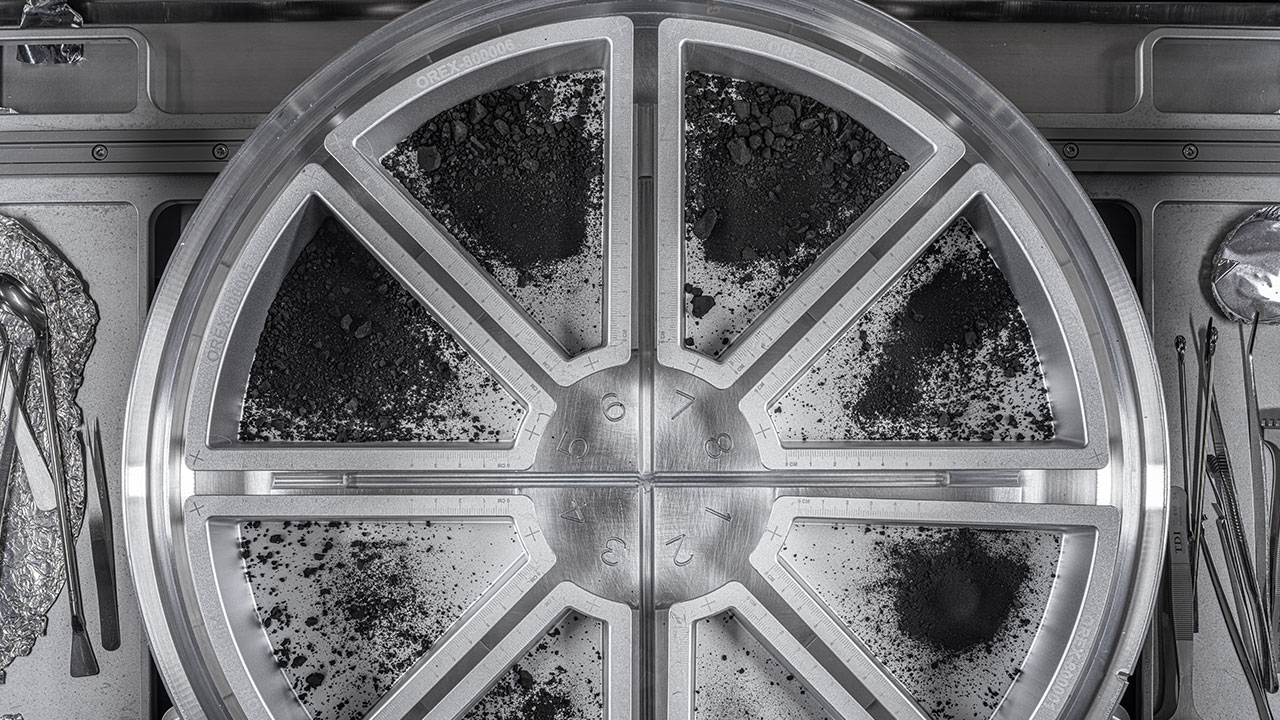
NASA scientists have finally tallied how much material a spacecraftsnatched from a distant "potentially hazardous" asteroid, and it turns out they've got more than double what they expected.
The sample — roughly 4.3 ounces (122 grams) of rocky space rubble that the OSIRIS-REx spacecraft collected from the asteroid Bennu — could contain some of the earliest precursors for life and is the first space rock ever retrieved by a NASA mission.
After landing in the Utah desert on Sept. 24, 2023, the OSIRIS-REx capsule was taken to NASA's Johnson Space Center in Houston, where scientists began working to disassemble it — which proved trickier than many anticipated. Two of the capsule's 35 fasteners got stuck, forcing NASA researchers to initially only collect about 2.48 ounces (70.3 grams) of sample resting on the lid of the canister.
Related: Asteroid Bennu may be 'a fragment of an ancient ocean world', 1st sample analysis suggests
Then, after specially designing and testing bespoke tools for the task, scientists finally opened the lid's last two clasps. After fully disassembling it, they retrieved 1.81 ounces (51.2 grams) more of the asteroid from inside.
The NASA mission launched in September 2016 and traveled 200 million miles (320 million kilometers) to reach Bennu before returning to Earth with the sample in May 2021. OSIRIS-REx mission scientists spent nearly two years searching for a landing site on Bennu's craggy surface before the spacecraft touched down to collect the sample. Upon making contact with the asteroid, OSIRIS-REx fired a burst of nitrogen from its Touch-and-Go Sample-Acquisition Mechanism to stick the landing and prevent the craft from sinking through the asteroid, as well as to capture the sample.
The capsule's long-awaited contents include roughly 4.5 billion-year-old rocks from the earliest years of the solar system. They also contain some of the primordial elements believed to have sparked life on Earth.
Some of these building blocks — including uracil, one of the nucleobases for RNA — were also recently found on the asteroid Ryugu by the Japan Aerospace Exploration Agency's Hayabusa2 spacecraft, which returned to Earth with its rock sample in 2020. OSIRIS-REx mission scientists are hoping to find other such biological precursors inside the Bennu sample.







